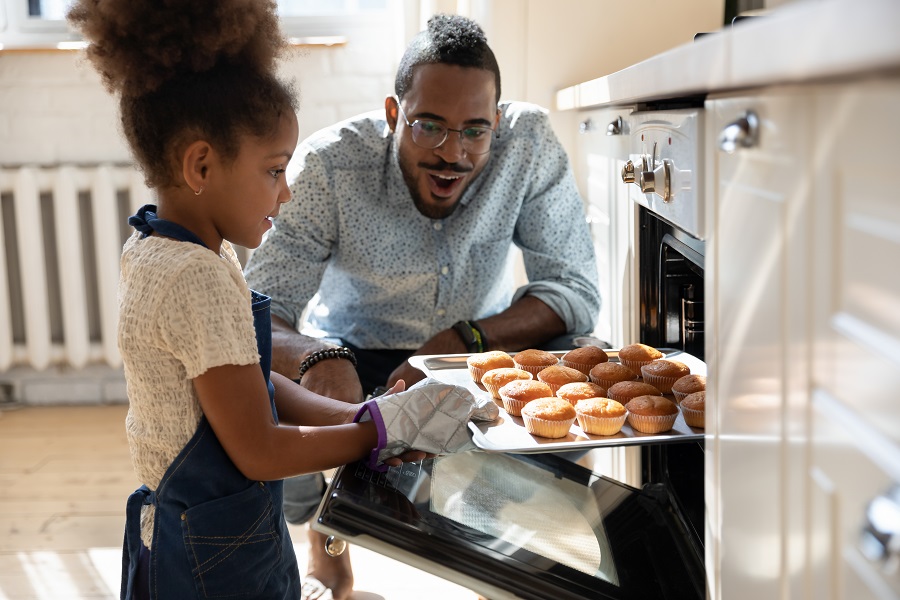Long before gas and electric power, the oven still existed in some shape or form. Today, it’s evolved into something completely different to its ancient coal or wood-fired ancestor. If you’re looking at the array of settings and functions on your new oven and wishing for a simpler version, don’t worry. We’ll keep things simple when we look at how to use an oven.
1. Get to know your oven
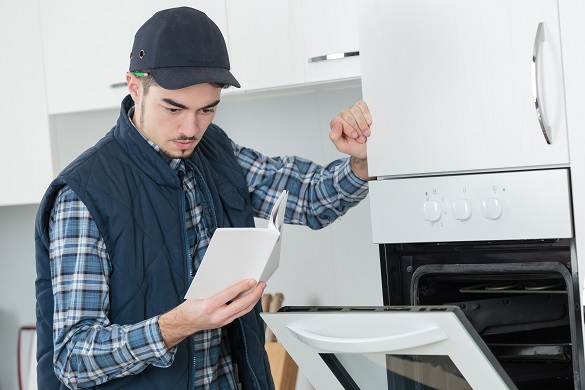
No two ovens are the same. There’s a broad selection on the market today and they all have their own unique settings and cooking programs. A lot of brands even have their own ‘brand-only’ functions to keep them ahead of the competition.
The best thing you can do is to make yourself a cup of tea, sit down and read the user manual. After all, if you’ve just bought it, you’re going to be spending a long time with it. Isn’t it worth finding out the special features and things it can do for you? For example, you may be unaware that your oven has a setting for baking cakes. Which might explain why your Victoria sponge never quite rises properly. Or it might hold the secret to the best temperature and shelf position for your Hawaiian pizza.
Try and dig yours out now and have a look. You might be surprised what you learn.
2. Set the right temperature
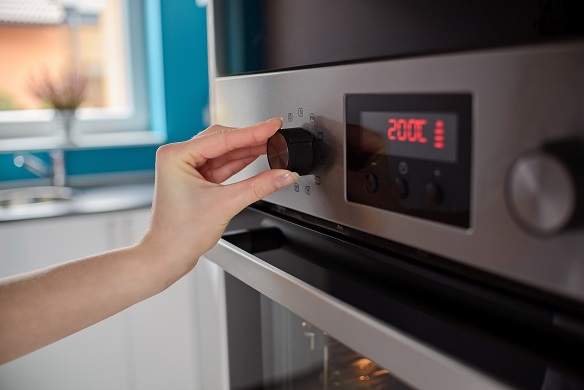
Getting the temperature right is probably the number one rule in cooking or baking. With foods like meat and fish, it’s especially important if you want to avoid any kind of food poisoning for you or your guests.
Conventional ovens have heating elements on the top and bottom of the oven cavity. Convection ovens have these elements too, but they also have a fan that helps circulate hot air throughout the oven cavity.
Both will cook your dinner, no problem. But the three main benefits of convection ovens (fan ovens) are that they:
- Cut out the need to rotate dishes between the oven racks
- Help with browning, crisping and roasting
- Preheat faster and help cook food faster (depending on the recipe)
This oven conversion chart will help you quickly convert temperatures between gas, Celsius, Fahrenheit and fan ovens.
3. Preheat the oven
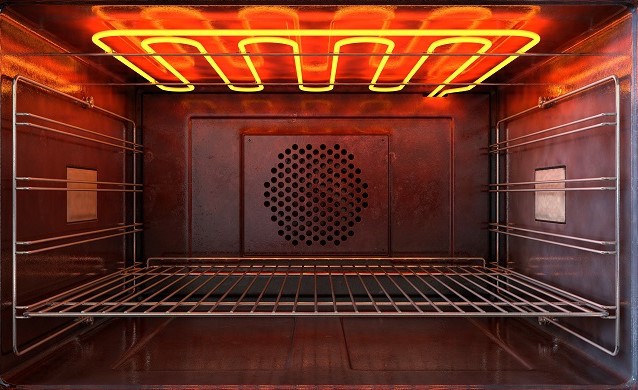
All of us have tried to get away with putting something in the oven seconds after we’ve turned it on. But there are some benefits to preheating your oven.
You might think you’re saving time by getting your food cooking as soon as you can but if you can wait for it to preheat, your patience will be rewarded. Time and temperature affect the texture and flavour of food. Starting off in a cold oven will give it the worst start possible. Your food will cook unevenly, compromising its texture and flavour. Especially with raw meat and fish, you want your oven to be ready to cook, at the right temperature, as soon as your food goes in.
So just relax (or remember to preheat it ahead of time).
4. Place food in the oven

Heat rises. So, when using an oven, you know that things on the top shelf will cook or bake quicker. But remember that Hawaiian pizza we talked about earlier? You’re not going to get a perfect crispy base if you put it on the top shelf. Where you position your food will make a difference to how it cooks.
The top shelf is perfect for crisping and browning your quick-cooking foods. It’s ideal for fish, thin slices of meat or for getting a nice, bubbling cheesy top.
The middle shelf is the go-to for most dishes. There’s room for hot air to flow evenly around your food. It’s an equal distance from both the top and bottom heating elements too. The middle shelf is best for baking casserole style dishes or your cakes and pies.
With electric ovens, the bottom heating element is the primary heat source, which means it gets the bottom of your food piping hot. Use this when roasting large cuts of meat, or for getting a crust on your pies and bread.
If you're using multiple racks to cook dishes, try to stagger the dishes so that one isn’t above or below another. A consistent airflow ensures each dish is surrounded by heat at every level.
5. Set a timer
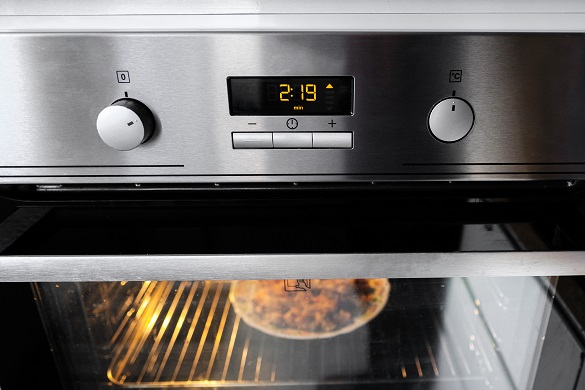
Putting your face against the oven door probably isn’t the best way to check if something’s done. If your dishes are coming out over (or under) cooked, you may want to start using a timer.
A timer will help you get consistent results and help you be more efficient by freeing up time in the kitchen. It’ll also help you avoid food waste. When food’s cooked properly at the right temperature for the right amount of time, you’ll be less likely to throw it away.
Once again, it’s always best to refer to your manual as timer settings can vary by appliance and brand. But if you need to step out of the kitchen to answer the door or see what’s happening on Eastenders, it may be worth setting a separate timer. Even if it’s just on your phone, it will help you keep track of time.
6. Clean the oven after use
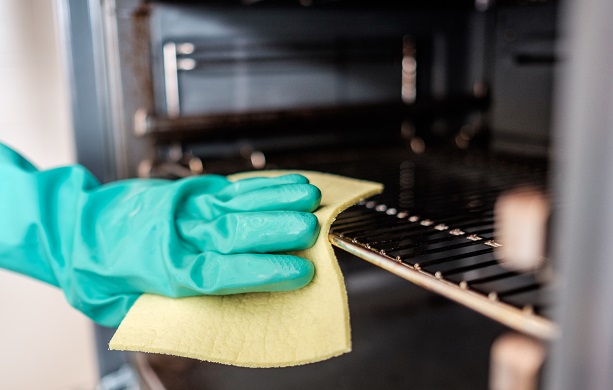
Well, that Hawaiian pizza was delicious, wasn’t it? Does it really matter about the cheese that fell off onto the bottom of the oven? The answer is sadly, yes. Once the oven’s cooled down, you’ll want to clean that straight away. It’s only going to get harder to scrape off the longer you leave it.
We all put off scrubbing grease and accumulated residue or removing burnt bits of food. Cleaning the oven feels like a big task but there are ways to make it easier and more bearable. The reward will be a beautifully clean oven that’ll you’ll be proud of opening for friends at any given opportunity.
So when you’re ready to face it, we’ve got some great cleaning tips to keep your oven sparkling.
Our blog is loaded with more related articles
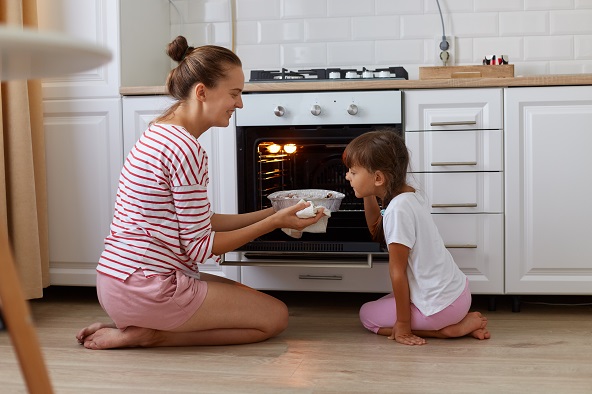
Oven tips
Electric or gas oven: the key differences
Find out the differences between electric and gas ovens, including their cooking performance, energy efficiency, maintenance re...
Read more

Oven tips
How to clean your oven
Discover how to clean your oven effectively and safely with this step-by-step guide. Get helpful tips on cleaning materials to...
Read more
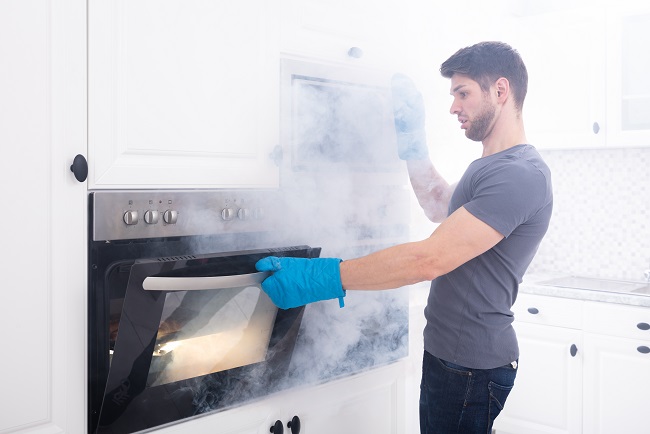
Oven tips
What to do if your oven is smoking
If your oven is smoking when you use it, find out what practical steps you can take to address the issue, along with tips for p...
Read more
